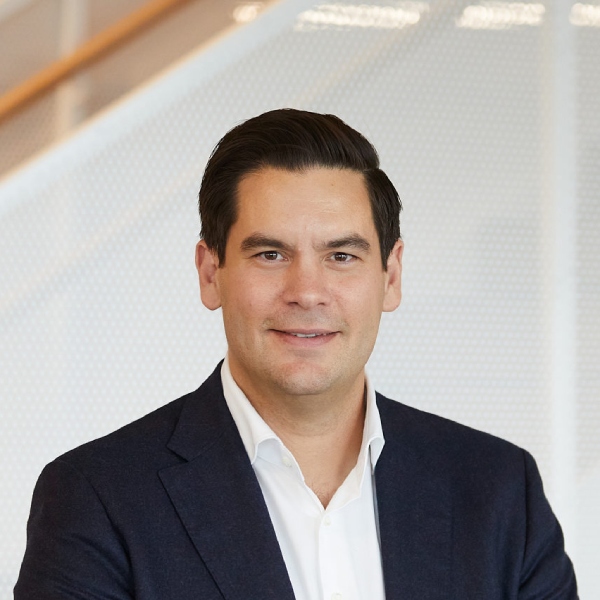APREA Market Flash - September 2024

In this special issue of APREA Market Flash, we focus on Australia, which has become a top destination in APAC for cross-border investments, thanks to its stability, transparency, and diverse real estate opportunities. Booming population growth is driving demand, particularly in high-performing sectors like logistics and living. With strong economic fundamentals and a transparent legal framework, Australia offers a safe, lucrative environment for global capital.
We have asked leaders and experts across the APREA network about this topic, and we are pleased to share their perspectives and actionable strategies on navigating the dynamic Australian market.
Sigrid ZialcitaCEO
APREA

Ada Choi
Head of Research, Asia Pacific
CBRE

Andrew Lim
Group Chief Operating Officer
CapitaLand Investment

Christine Li
Head of Research, Asia Pacific
Knight Frank

Greg Hyland
Head of Capital Markets, Asia Pacific
CBRE

Hamish MacDonald
Head and CIO of APAC Real Estate
BlackRock

Jason Maxwell
Country Manager – Australia & Assistant Portfolio Manager
AEW

Joachim Kehr
Portfolio & Regional Head, Asia-Pacific
CenterSquare Investment Management Asia Pacific

Luke Billiau
Head of Capital Markets - Australia & New Zealand
JLL

Luke Mackintosh
Partner
EY

Philip Pearce
Deputy Chief Executive Officer,
ESR Group
Chief Executive Officer,
ESR Australia & New Zealand

Warren Ebert
Chief Executive Officer
Sentinel Property Group

Wissam Abwi
Partner
MinterEllison
Australia is projected to be the top destination for cross-border investment in APAC. What factors are driving Australia’s rise as a preferred destination for cross-border real estate investors?
Australia is one of CapitaLand Investment’s focus markets where we see significant potential for growth. Through the strength of our in-country investment, asset management and operations teams, we have built a strong presence in Australia with over S$8 billion in assets under management, spanning across logistics, business parks, commercial and lodging. These sectors continue to present opportunities given Australia’s stable macroeconomic fundamentals and transparent real estate market.
Which sectors are bright spots and which cities are currently experiencing the most significant growth in cross-border real estate investment in Australia. What are the emerging trends influencing these investment hotspots?
As foreign investment into Australia increases, it will also attract more talent and travellers. This bodes well for the lodging sector, especially in gateway cities such as Sydney and Melbourne. Additionally, we see opportunities in Australia’s private credit sector, with a forecasted S$131.5 billion commercial mortgage funding gap expected by 2028. As a leading global real asset manager with a strong Asia foothold, we continue to work with our capital partners to seek suitable investment opportunities to widen our fund product and asset class offerings to deliver sustainable long-term growth.
Andrew Lim
Group Chief Operating Officer
CapitaLand Investment
Australia is projected to be the top destination for cross-border investment in APAC. What factors are driving Australia’s rise as a preferred destination for cross-border real estate investors?
Knight Frank’s research predicts that 36% of the cross-border capital targeting Australia will make it the top cross-border destination in 2024 among APAC markets. Despite muted sentiments in the first half, the second half will likely witness a narrowing bid-ask spread, which would encourage dealmaking. A higher number of assets in the pipeline have been actively marketed, exceeding expectations. Assets in Australia appear more attractive due to higher-than-average re-pricing compared to the rest of the region. Cautious buyers should note that owners' price recovery optimism may limit future acquisition opportunities as the latter holds onto their assets in anticipation of a turnaround. We think that the following six to nine months offer a prime investment window for undervalued assets.
Which sectors are bright spots and which cities are currently experiencing the most significant growth in cross-border real estate investment in Australia. What are the emerging trends influencing these investment hotspots?
Prime office, logistics and retail assets across its most developed cities – Brisbane, Melbourne, Perth and Sydney – will remain attractive to core investors. The Industrial sector is currently Australia's most favored stabilized asset class due to its relatively low risk with long-term growth potential. Yields appear to have stabilized, averaging 5.5% to 6.4%, suggesting that pricing adjustment has likely bottomed. The Office sector is anticipated to see yield stabilization in H2 2024 after substantial repricing. As transactional evidence accumulates and heightened investor confidence spurs increased market participation, liquidity in the office market is gradually improving. Higher up the risk curve, brown-to-green strategies in office and logistics as well as urban regeneration of its core business precincts also offer compelling opportunities. While its living sectors continue to generate substantial interest, we expect development opportunities in co-living and purpose-built student accommodations to gain more traction in the short-to-medium term, as regulatory reforms to unlock the full potential of its Build-to-Rent (BTR) sector are still ongoing.
What are the most common challenges faced by foreign investors when navigating the Australian real estate market, and how can they effectively mitigate these risks?
Australian commercial real estate is one of the most internationalized markets for foreign investor participation. With a developed economy and one of the world’s most liquid and transparent property markets, Australia provides relatively low-risk opportunities in international real estate portfolios. However, its status as one of the world’s premier real estate investment destinations means deal sourcing and competition for assets will be intense. There are also foreign investment regulations, and some investors might find access to strategic infrastructure assets in the country, such as data centers, to be limited. Establishing a strong network of local connections can offer tactical benefits by aiding regulatory understanding, expediting transactions, and providing intelligence to opportunities.
CHRISTINE LI
Head of Research, Asia Pacific
Knight Frank
Australia is projected to be the top destination for cross-border investment in APAC. What factors are driving Australia’s rise as a preferred destination for cross-border real estate investors?
Australia is one of the most preferred cross-border investment destinations in Asia Pacific given the stability, transparency, and relative value that this market offers. Investors are drawn to Australia for its variety of asset classes across wide price points that are liquid.
Also, Australia has amongst the highest projected population growth in the coming decade, with 375,000 new migrants expected to arrive for the year 2024. This is likely to drive significant demand for real estate.
Which sectors are bright spots and which cities are currently experiencing the most significant growth in cross-border real estate investment in Australia. What are the emerging trends influencing these investment hotspots?
Investors have favoured the logistics and living sectors in Australia over the past 18 months. Logistics rents in Australia have outperformed all global markets however these elevated growth levels are decelerating towards the long-term average. Despite slowing rental growth, investor appetite for high quality assets remains.
Meanwhile, the high population growth in Australia, combined with restrictive supply is encouraging investment into the living sector, however government policy and high construction cost are major inhibitors for capital allocation.
The office sector is now starting to emerge as investors are renewing interest in as yields have been further expanded, amid repricing observed in recent transactions. Coupled with the fundamentals of the leasing markets, the return outlook looks robust.
Greg Hyland
Head of Capital Markets, Asia Pacific
CBRE
Australia is projected to be the top destination for cross-border investment in APAC. What factors are driving Australia’s rise as a preferred destination for cross-border real estate investors?
Australia presents a highly attractive investment environment due to its wealth of resources, market transparency and affluent society with strong social cohesion. Significant migration inflows have bolstered real estate demand, supported by positive growth forecasts and expectations of continued economic expansion and urban development. Despite yield movements from ongoing market repricing, fundamentals in target sectors remain robust. Compared to other Asia Pacific markets, Australia has experienced a higher-than-average real estate asset repricing and signs of isolated dislocation, offering an opportunity to capitalize on the most favourable buying conditions since the Global Financial Crisis.
Furthermore, Australia lags the US and UK in real estate trends, providing further growth potential in sectors with strong global capital demand and a micro market supply demand imbalance such as life sciences, childcare and self-storage.
Which sectors are bright spots and which cities are currently experiencing the most significant growth in cross-border real estate investment in Australia. What are the emerging trends influencing these investment hotspots?
We have a strong preference for sectors where we can grow real cashflows and leverage the ‘APAC lag’ by applying successful strategies from the US and Western Europe to markets like Australia that are not yet at an institutional scale. We see compelling investment opportunities in alternative sectors like Life Sciences and Childcare where we can create institutional grade portfolios in demand from global investors.
The Life Sciences sector in Australia is still at its infancy and is following a similar, albeit smaller, growth trajectory to that of the US and UK, driven by increasing healthcare spending, high-quality research institutions and substantial government funding. There is a scarcity of high-quality, privately owned life sciences real estate in Australia, coupled with a deep occupier base needing such facilities in established life sciences clusters in major cities. We anticipate significant rental reversion for these laboratory assets in the domestic market, given the large existing spread to economic rents (global rental premiums range from 35-75% average vs office).
The Childcare sector is an essential social infrastructure asset with strong bi-partisan political support for significant government subsidies to improve economic productivity. Childcare leases are generally long (15-20 years) with annual CPI-linked increases (uncapped with a fixed 3-3.5% floor) and double or triple net, resulting in minimal cashflow leakage and a rare real investment yield. The Australian government directly subsidises an average 70% of childcare operators revenue, providing an opportunity to find high quality tenant covenants. The essential nature of childcare services further contributes to their resilience during economic fluctuations. A large-scale portfolio of these properties, diversified by location (focusing on larger urban areas) and childcare operators, with these essential social infrastructure characteristics, gives us confidence that this asset will be in high demand from domestic and international capital.
Hamish MacDonald
Head and CIO of APAC Real Estate
BlackRock
Australia is projected to be the top destination for cross-border investment in APAC. What factors are driving Australia’s rise as a preferred destination for cross-border real estate investors?
- A strong demographic picture - positive population growth dynamics, concentration of this population in major cities along the east coast in land constrained markets, and a relatively younger median working age versus other Asian counterpart countries which will support GDP growth into the future.
- Transparency and an established rule of law – we take this as a given but the ability to buy a freehold title to an asset or land cannot be understated. Transparency ultimately impacts investment confidence, and Australia ranks #4 globally and the highest in APAC according to JLL’s Transparency Index. Transparency also means that any repricing in the market plays out in an open forum. With notable repricing in certain sectors and the continued strength of cash flows, promising opportunities may emerge.
- At its simplest level, ability to access long leases with inbuilt growth mechanisms (CPI, fixed, market reviews) and invest into a growing cashflow with a rebased yield is attractive on a comparative regional basis.
Which sectors are bright spots and which cities are currently experiencing the most significant growth in cross-border real estate investment in Australia. What are the emerging trends influencing these investment hotspots?
- Every repricing cycle brings opportunity and the ability to find value, and with pricing seemingly finding a floor in some sectors, there is emerging confidence that a cyclical improvement in some cities and sectors is at hand. The share of cross-border transaction volumes has decreased from a 30% average in 2018 and 2019 to less than 20% year-to-date. Additionally, with a diminishing opportunity set regionally, Australia screens very well.
- We like the property sectors that are leveraged to the positive macro tailwinds – more people needing more things more quickly at the lowest cost. Near-term this remains industrial and logistics within NSW and QLD, both benefiting from these positive populations’ tailwinds and a scarcity of infill land/under-supply to support a growing and ultimately densifying population base.
- We continue to have an interest in sectors with an adjunct to the living thematic where there is undersupply (co-living, self-storage, student housing, land lease communities, affordable housing) – more people in less space against a backdrop of higher costs.
- Sydney is a truly global city, and its recent and ongoing infrastructure developments only strengthen its status. Combined with its dynamic metro markets, it continues to be a top market to watch.
What are the most common challenges faced by foreign investors when navigating the Australian real estate market, and how can they effectively mitigate these risks?
Navigating the complex regulatory landscape across states—where differences in regulations, taxes, and planning systems can be significant—poses a challenge. To stay competitive, it is crucial to implement proactive strategies across sectors, even for core investments. This emphasizes the importance of having local teams with deep market experience to effectively address these regional variations and maintain relevance in the market.
Jason Maxwell
Country Manager – Australia & Assistant Portfolio Manager
AEW
Australia is projected to be the top destination for cross-border investment in APAC. What factors are driving Australia’s rise as a preferred destination for cross-border real estate investors?
Australia is home to Asia’s most recession-proof consumer and a growing one at that, thanks to a continued influx of immigrants. For real estate that means demand is high whilst supply isn’t because of high construction costs, a stringent and hard to navigate approval process and currently high interest rates. That makes Australia one of the most appealing real estate markets globally.
Which sectors are bright spots and which cities are currently experiencing the most significant growth in cross-border real estate investment in Australia. What are the emerging trends influencing these investment hotspots?
In the coming years, Brisbane should steal some of the limelight that traditionally falls on Sydney and Melbourne. Brisbane is seeing large amounts of infrastructure investment, rising interstate migration as Brisbane offers homebuyers more bang for their buck than places like New South Wales and Victoria and the city will increasingly feature on the global stage in the run-up to its hosting of the 2032 Olympics.
Joachim Kehr
Portfolio & Regional Head, Asia-Pacific
CenterSquare Investment Management Asia Pacific
Australia is projected to be the top destination for cross-border investment in APAC. What factors are driving Australia’s rise as a preferred destination for cross-border real estate investors?
We’re seeing strong capital inflows from Singaporean and Japanese capital into Australian real estate. Australia ranks very favourably in the region for foreign capital for the long- standing reasons of being an open, mature, and stable economy, with high levels of transparency and strong risk adjusted returns for real estate. The stability and resilience offered in Australia are highlighted more acutely when markets are volatile and there is a lot of economic uncertainty, which explains the current level of inbound interest.
The diversity of product and investment type also attracts capital to Australia – with the ability to access scale, different Alternative segments, a variety of options for deal structures via JVs, partnerships, or funds, as well as options right across the capital stack. The depth of high quality and experienced managers, both institutional and private boutiques, seeking third-party capital means there are plenty of opportunities for foreign capital that’s seeking local expertise.
Which sectors are bright spots and which cities are currently experiencing the most significant growth in cross-border real estate investment in Australia. What are the emerging trends influencing these investment hotspots?
Logistics and Living have been the most favoured sectors for many groups for some time. While interest in Data Centres has spiked this year, and accessing developed product has eased somewhat, it still remains challenging.
While logistics remains a priority for a lot of offshore capital, in the Living sectors – focus has shifted from BTR to PBSA given high construction costs which are impacting BTR development feasibility.
Demand is broadening beyond those two sectors of Logistics and Living, as opportunities emerge and a pricing floor is found. Notably, we’ve seen a pick-up in activity in office in 1H24 which has been driven largely by offshore groups. Retail is garnering a lot more interest from institutional groups, although in contrast to office, most of the interest has been domestic.
What are the most common challenges faced by foreign investors when navigating the Australian real estate market, and how can they effectively mitigate these risks?
The most common challenge for foreign investors is finding an asset that meets their criteria, which may be constrained by age, location, grade or ESG credentials. It’s important to have a flexible enough mandate to invest beyond the typical requirements, in order to take advantage of opportunistic timing or pricing. Often, foreign investors limit their focus to the gateway cities of Sydney and Melbourne. However, Brisbane for example, is gaining a lot of leasing momentum and rental growth in the office market, which is critical to driving returns.
Luke Billiau
Head of Capital Markets - Australia & New Zealand
JLL
Australia is projected to be the top destination for cross-border investment in APAC. What factors are driving Australia’s rise as a preferred destination for cross-border real estate investors?
- By the year 2030 and 2040 Australia will have the highest population growth globally and one of the Top 4 youngest populations. Drive this growth is immigration with the intake including Students and Skilled Migrants.
- The biggest winners from a strong population growth is the property sector and the demand for housing, logistics, health care and retail/commercial.
- 80% of the equity invested into the emerging AUD$20.0B Institutional Build to Rent sector is foreign institutional capital as the sector provides long term stabilised income stream highly correlated to both CPI and wage growth.
Which sectors are bright spots and which cities are currently experiencing the most significant growth in cross-border real estate investment in Australia. What are the emerging trends influencing these investment hotspots?
- The “Living Sector” in Australia is emerging as a preferred place to allocate capital. This includes Purpose Built Student Accommodation, Co-Living, Institutional Build to Rent and Landlease Communities.
- With the State and Federal governments focused on delivering more social and affordable housing we are seeing more institutional capital enter the sector on the back of government incentive programs such as HIFF and HIF etc.
- Capital is predominantly focused on both the Sydney and Melbourne markets. Melbourne recently reached a population of 7m people which is now the largest city in Australia.
What are the most common challenges faced by foreign investors when navigating the Australian real estate market, and how can they effectively mitigate these risks?
- Typically the challengers are the Tax environment at both a state and federal level. The Foreign Investor surcharges on both Stamp Duty and Land Tax are considered a significant barrier to entry.
- Housing has also become political with minor parties now using housing as a means of obtaining a greater share of votes. This means tax incentives, allowing BtR to compete on a level playing field with other institutional asset classes, are being held up thus causing many overseas institutional investors to either invest in other countries, where tax changes have occurred to encourage investment into housing i.e., Canada, or to sit on the sidelines until these changes have been passed.
Luke Mackintosh
Partner
EY
Australia is projected to be the top destination for cross-border investment in APAC. What factors are driving Australia’s rise as a preferred destination for cross-border real estate investors?
In an increasingly uncertain global/APAC economy, Australia is seen as a safe and politically stable place for investors. Key thematics of broad Australian market are strong macroeconomic fundamentals, transparency, highly liquid (especially relative to markets like China)
Which sectors are bright spots and which cities are currently experiencing the most significant growth in cross-border real estate investment in Australia. What are the emerging trends influencing these investment hotspots?
From an industrial perspective, Sydney continues to attract the bulk of cross border capital. Prohibitive foreign land tax increases in both Melbourne and Brisbane are making it harder for cross border investment in these cities.
Real estate credit has also been a hot sector on the back of increasing interest rates. Investors have been able to achieve equity returns on debt investments.
What are the most common challenges faced by foreign investors when navigating the Australian real estate market, and how can they effectively mitigate these risks?
Particularly in the development space, planning and regulatory approval process are becoming increasingly challenging for investors to navigate. We have seen this in developing greenfield developments in Sydney but are also aware of significant challenges faced in the residential/BTR sector.
Philip Pearce
Deputy Chief Executive Officer,
ESR Group
Chief Executive Officer,
ESR Australia & New Zealand
Australia is projected to be the top destination for cross-border investment in APAC. What factors are driving Australia’s rise as a preferred destination for cross-border real estate investors?
With Brisbane to host the 2032 Summer Olympic and Paralympic Games, the eyes of the world will be on Australia and in particular the Sunshine State of Queensland and its fast-growing capital city, Brisbane.
Queensland’s southeast corner, including Brisbane, the Gold Coast and Sunshine Coast, is already experiencing boom times. The state has the highest rate of net domestic migration in Australia. Brisbane is projected to record some of the strongest effective rental growth of any market within the Asia-Pacific region and is the number one city in Australia for rental growth. Brisbane is ranked number one for emerging world cities office employment.
While its population is rapidly rising, Australia is regarded as a stable and peaceful democracy with low sovereign risk. Australia has a strong track record of being a desirable country to invest and is one of only nine countries to be rated AAA by all three major credit rating agencies.
The Reserve Bank of Australia lifted its official interest rates by 425 basis points between May, 2022, and November, 2023, which impacted on the commercial property sector but has created tremendous opportunities for buyers. Buying conditions are the best since the global financial crisis.
Which sectors are bright spots and which cities are currently experiencing the most significant growth in cross-border real estate investment in Australia. What are the emerging trends influencing these investment hotspots?
A major influence on the commercial property market is the cost of building. In Queensland, more than $90 billion of government projects are in the pipeline over the next decade, which will absorb much of the human capital, with work tied up in union contracts. Nothing else of scale is going to be built, particularly new office buildings and shopping centres in Brisbane, due to construction costs. But there is expected to be enormous price growth for existing assets and strong rental growth.
In Sydney, the commercial market is strong with limited supply. Melbourne struggled through the COVID-19 pandemic with more lockdowns than any other city in the world. The office sector there is still dealing with oversupply and large numbers of state government employees continuing to work from home.
Industrial property in Australia has had a fantastic run over the last few years, yield compression peaked not long after interest rates started to climb although rental growth remains solid.
The retail sector in Australia has rebounded after some difficult years during COVID, highlighting how people are social animals who are happy to mix at shopping centres, not just purchase goods online. Sentinel Property Group has bought two major regional shopping centres since COVID, Casuarina Square in Darwin and Caneland Central in Mackay in Central Queensland. Both dominate their markets. Construction costs for large shopping centres are prohibitive.
What are the most common challenges faced by foreign investors when navigating the Australian real estate market, and how can they effectively mitigate these risks?
One of the main challenges is understanding the market as it takes time to navigate through the different cities and sectors. It will be beneficial to partner with a local real estate investment trust such as Sentinel. We are happy to discuss prospective partnerships. Sentinel, which was established in Brisbane during the GFC, has a $2 billion portfolio and a proven track record of achieving outstanding returns for investors.
Working with experts on the ground can also help negotiate the varying tax rules in Australia. Australia’s taxation system is one of the most complex yet structured in the world, and it may be even harder to understand for foreign investors.
For foreigners, taxable income can include income from rental properties located in Australia and income from dividends, interest, and royalties derived from Australian sources. Foreign investors who are non-resident for Australian tax purposes also pay withholding tax on certain Australian sourced interest and investment income.
Working with an Australian-based company is one way to mitigate risks with taxation and to be guided on any other issues regarding investment.
Warren Ebert
Chief Executive Officer
Sentinel Property Group
What are the most common challenges faced by foreign investors when navigating the Australian real estate market, and how can they effectively mitigate these risks?
The most common challenge that foreign investors are facing is the regulatory environment in Australia, which is constantly evolving. This continuous shift in the regulatory landscape means that foreign investors are required to understand and work out an appropriate investment strategy within the parameters of this landscape. Planning for this regulatory landscape not only makes sense from a financial perspective but also improves the competitiveness of the foreign investor in the pursuit of opportunities in a competitive environment. Given the strong competition in relation to opportunities in this market, it is also becoming increasingly important to partner with others. Such partnerships are intended to bring together complimentary capabilities, strategies and objectives which are able to unlock and realise value in such opportunities. Choosing a partner requires consideration as to whether there is an alignment of culture, governance, investment strategy and approach amongst other things. This is best determined by being ‘on the ground’ and building good relationships with the players in this market.
Wissam Abwi
Partner
MinterEllison
What are the most common challenges faced by foreign investors when navigating the Australian real estate market, and how can they effectively mitigate these risks?
Investors should be aware of the headwinds in Australia’s economic outlook, as growth is expected to normalise after the rebound since last year. The spike in migration and overseas students in Australia have driven the overall growth this year but such wave is coming to an end. Therefore, population growth is going to slow down quite significantly in 2025.
Also, lending rates in Australia remain high, investors may still face negative carry in markets that have high incentive levels.
Ada Choi
Head of Research, Asia Pacific
CBRE
